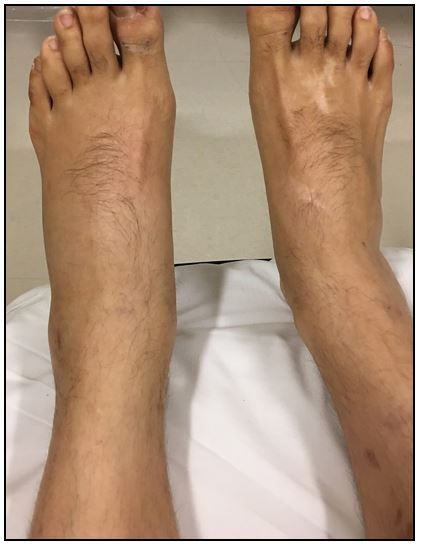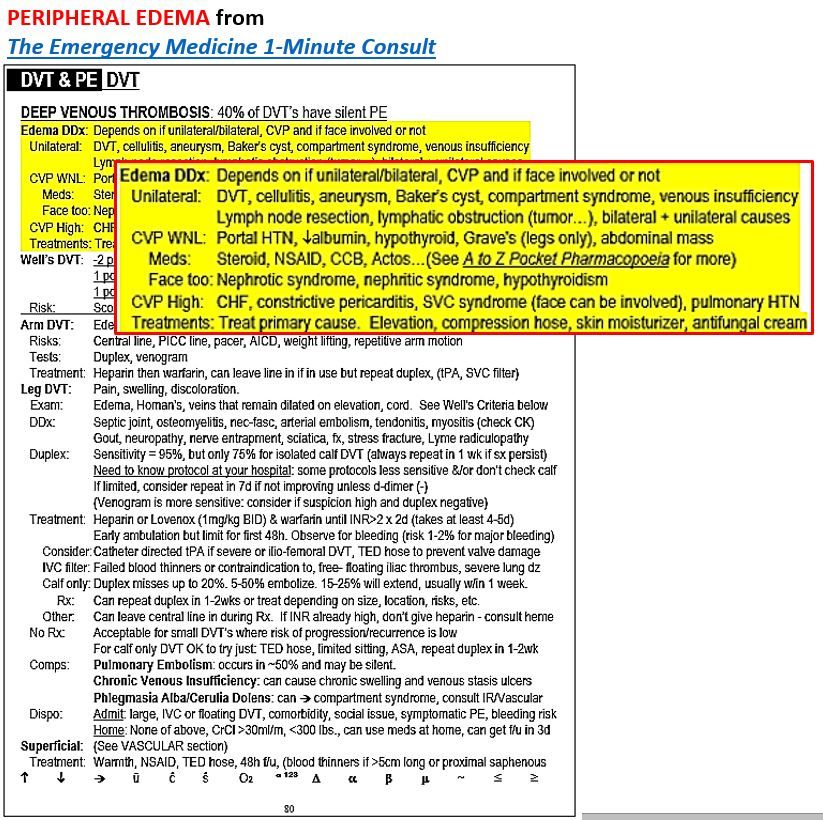- Clinical Technology
- Adult Immunization
- Hepatology
- Pediatric Immunization
- Screening
- Psychiatry
- Allergy
- Women's Health
- Cardiology
- Pediatrics
- Dermatology
- Endocrinology
- Pain Management
- Gastroenterology
- Infectious Disease
- Obesity Medicine
- Rheumatology
- Nephrology
- Neurology
- Pulmonology
Unilateral Lower Leg Edema with Calf Pain
A 62-year-old man being treated for lymphoma is sent to the ED by his oncologist for evaluation of left ankle swelling. Is this DVT? What's your diagnosis?
Figure 1. Unilateral lower leg edema seen in a 62-year-old man (click to enlarge image)


Presenting history
A 62-year-old man comes to the emergency department complaining of 4 days of gradually worsening left ankle swelling associated with some calf pain. He is currently receiving chemotherapy for lymphoma and his oncologist sent him in to rule out a DVT. He denies prior leg edema or history of DVT/PE and has no fever, chest pain, SOB, or other complaints.
Vital signs and physical examination
Vital signs are normal. Findings on physical exam also are normal except for mild swelling of the left foot and ankle, seen in Figure 1 at right; please click to enlarge.
Results of initial diagnostic testing
- CBC shows mild pancytopenia
- Values for metabolic panel and LFTs are normal
- Lower extremity duplex ultrasound is negative for DVT
What is the differential diagnosis for leg edema?
Differential diagnosis of unilateral leg edema
- Deep vein thrombosis
- Cellulitis
- Aneurysm
- Baker cyst
- Compartment syndrome
- Venous insufficiency
- Lymph node resection
- Lymphatic obstruction
Addtional information provided in yellow highlighted area from sample page in Figure 2, at right; please click to enlarge.
Discussion
Peripheral edema has many causes; the most common are bilateral. High central venous pressure is one mechanism with volume overload from CHF or renal failure being the most common cause; significantly more rare are pulmonary hypertension, constrictive pericarditis, and superior vena cava syndrome. Normal-pressure causes of bilateral leg edema are protean, with the most common being low albumin levels from liver or renal disease. Other causes are listed in the sample page in Figure 2. It is always good to keep in mind medications that can cause edema such as steroids and nonsteroidals, Actose and calcium channel blockers.
Unilateral edema is most commonly a result of DVT, trauma, cellulitis, or venous insufficiency; less common causes include Baker’s cysts and lymphatic obstruction. Even less common, but critical not-to-miss causes include compartment syndrome and aneurysm. For more details, click on sample page to the right to enlarge, then focus on highlighted area.
The cause of this patient's edema was a ruptured Baker’s cyst.
For additional information, please see full excerpt on Peripheral Edema from The Emergency Medicine 1-Minute Consult pocketbook.
___________________________________________________
Dr Pregerson is an emergency medicine physician at Cedars-Sinai Medical Center in Los Angeles, California. Follow him on Twitter: @EM1MinuteGuru
